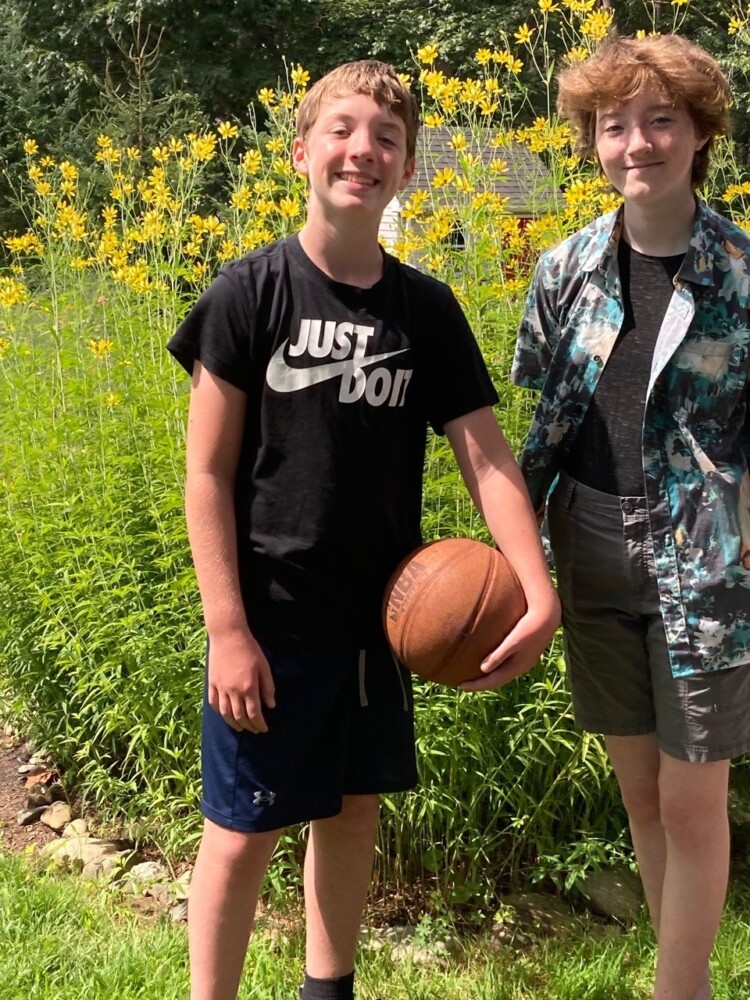Sometimes what the garden needs is a blue chair.
My wife, Nancy, heard that advice about four decades ago when she started taking landscape-design classes through the Garden Club Federation of Maine, and she has followed it while working on our own and other people’s gardens ever since.
The blue chair is metaphoric. Our garden has never had a physical blue chair, and I don’t remember seeing one in any of the many gardens I have visited. What it stands for is something big and colorful that can be a focal point. It is especially needed at this time of year, when many gardens have lost almost all of their blossoms and are basically just green – if they aren’t already beginning to turn brown.
For me, that standout plant is a tall (at least 4 feet) perennial with bright and profuse blossoms that catch your eye from 100 or more feet. We’re not talking about subtlety here.
Helianthus, or perennial sunflower, is a prime example. Some varieties grow up to 10 feet tall. The blossoms are usually bright yellow, or sometimes have a tinge of red and orange. They can be a bit aggressive, spreading by rhizomes, and if they don’t get at least five hours of sun a day they will flop – not a good look. But they work well in a wide range of soils, and these long-lasting showoffs begin to blossom in early August and remain in flower for a couple of months, as late as the first frost. They are native to the U.S. plains states.
Right next to helianthus in alphabetical catalogs is another winner, helenium, with the unfortunate common name of sneezeweed – given because it used to be an ingredient in snuff, not because it makes allergy sufferers sneeze. Helenium, native to much of North America, grows as tall as 7 feet and has either pure yellow flowers or blossoms with a little red and orange.
One of my favorite flowers, coreopsis tripteris, grows between our driveway and the vegetable garden; these also reach 7 feet or so. Nancy purchased the seeds a long time ago from the American Horticultural Society, and it has thrived. In past years the bright yellow blossoms started in late August or early September, but it began blossoming in mid-August this year – probably the result of the warm June. The species is native from Pennsylvania to Florida as well as in Quebec and Ontario. I’ve found cultivars of the plant in some local catalogs, which apparently reach about 5 feet.
One of the best tall, fall-blooming natives is the New England aster, which provides violet, pink and almost blue flowers and grows up to 6 feet tall. It wants full sun but will stand shade, and a wide range of soil types. As its name makes obvious, the New England aster is native to Maine; accordingly, it supports a variety of native bees, moths and butterflies. Growing instructions often advise pinching back the stems before mid-July, but as I am going for tall perennials here, I’d ignore that advice.
Two other plants that fit the category of late-blooming, eye-catching stunners are highly desirable natives.

Monarch butterflies lay their eggs on milkweed, in this case swamp milkweed, because it is the only plant their caterpillar offspring will eat. Derek Davis/Staff Photographer
One, swamp milkweed or asclepias incarnata, grows 7 feet tall in our garden and attracts bees as well as the monarch butterflies that entirely depend on it, and other milkweeds, for laying their eggs. The blooms are a faded pink/purple, which doesn’t stand out as well the other plants in this list. But given the many threats to monarch butterflies (a group of biologists have petitioned U.S. Fish and Wildlife Service to have the species reclassified as “threatened”), it is one every gardener should have.
Joe Pye weed, eupatorium purpureum, is a brighter purple than the swamp milkweed, and blooms later. It, too, is a magnet for butterflies. Both plants like full sun, but will stand some shade and are not fussy about the soil types. You can plant shorter versions of Joe Pye, called “Little Joe” at 4 feet and “Baby Joe” at 2½ feet, if you’re interested.
I’m saving my favorite for last. These are the hardy hibiscus, or mallow.
This is where the imprecise common names of plants can cause problems. Many beautiful plants are called hibiscus. Most people know the tropical hibiscus, which grow in places like Hawaii. They are gorgeous, but you can’t grow them outdoors in Maine. There are also hibiscus shrubs, aka Rose of Sharon, which you can grow in Maine; they are late bloomers and are wonderful. But in this column, my focus is flowers, not shrubs.
The hardy perennial hibiscus covers several species not native to Maine, though some are native as close as Massachusetts. Many experts these days recommend you plant straight species, not cultivars, for their greater benefits to native wildlife. Unfortunately, that advice won’t work with hardy hibiscus, because the species require soggier soil than most gardens around here have.
Perennial hibiscus are stunning. They have huge, often prolific blossoms, in purples, pinks, reds and whites. They attract the eye. More expensive than most other perennials, they are indulgences, but remember: You are worth it.
Tom Atwell is a freelance writer gardening in Cape Elizabeth. He can be contacted at: tomatwell@me.com.
Send questions/comments to the editors.



Comments are no longer available on this story